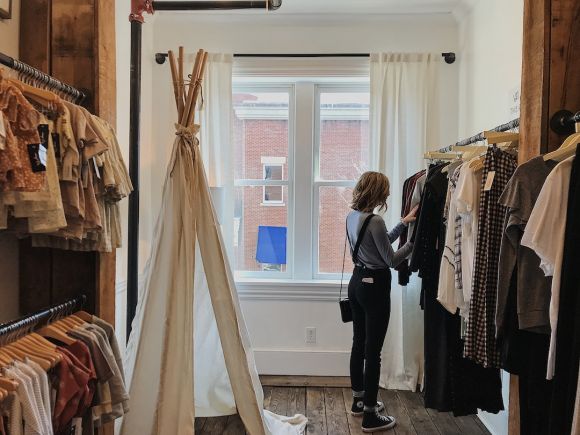In today’s fast-paced world, the fashion industry has taken on a new face with the rise of fast fashion. Fast fashion refers to the rapid production and consumption of clothing, driven by the demand for trendy and affordable clothes. However, the consequences of this phenomenon are detrimental to both the environment and society. From excessive waste to exploitative labor practices, the fashion industry’s impact is far-reaching. It is time to say goodbye to fast fashion and embrace a more sustainable and ethical alternative – clothing exchange.
What is a clothing exchange?
A clothing exchange, also known as a clothing swap or swap party, is an event where people come together to exchange their gently used clothing items with one another. Instead of throwing away unwanted clothes or buying new ones, participants can refresh their wardrobes by trading their garments. Clothing exchanges promote reusing and recycling clothes, reducing waste, and minimizing the need for new production.
The benefits of clothing exchange
1. Sustainable fashion: By participating in clothing exchanges, you are actively contributing to the reduction of textile waste. According to the Environmental Protection Agency, over 17 million tons of textiles were generated in 2018, with only 15.2% being recycled. Clothing exchanges help break the cycle of overconsumption by giving clothes a second life.
2. Cost-effective: One of the advantages of clothing exchanges is the affordability factor. Instead of spending money on new clothes, you can trade items you no longer wear for something fresh and exciting. It is a budget-friendly way to update your wardrobe without breaking the bank.
3. Unique style: Clothing exchanges offer a diverse range of clothing options, allowing you to explore different styles and fashion trends. You might find a hidden gem that perfectly matches your personal style, something you wouldn’t have discovered in a traditional retail store.
4. Community building: Clothing exchanges create a sense of community and connection among participants. It brings people together who share a common interest in sustainable fashion. These events often foster friendships, provide networking opportunities, and promote a sense of belonging.
How to organize a clothing exchange
1. Gather a group: Start by reaching out to friends, family, and colleagues who might be interested in participating. You can also utilize social media platforms to spread the word and invite others to join.
2. Set a date and venue: Choose a date and location for your clothing exchange. It can be a private home, a community center, or even a rented space. Make sure the venue is spacious enough to accommodate participants and their clothing items.
3. Establish guidelines: Clearly communicate the rules and guidelines of the clothing exchange. Specify the condition of the clothes to be exchanged, such as gently used or in good condition. You can also decide if there will be any restrictions, such as limiting the number of items each participant can bring.
4. Organize the event: On the day of the clothing exchange, set up different areas or racks for participants to display their clothes. Provide mirrors and fitting rooms for people to try on items before making their selections. It is also helpful to have bags or boxes available for participants to carry their newfound treasures.
5. Donate the remaining clothes: After the exchange, encourage participants to donate any unclaimed clothing items to local charities or organizations. This ensures that all garments find a new home and continue to be put to good use.
In conclusion, clothing exchange is a sustainable and ethical alternative to fast fashion. By participating in clothing exchanges, you can reduce textile waste, save money, discover unique styles, and build a sense of community. It is a step towards a more conscious and responsible approach to fashion. So, say goodbye to fast fashion and join the movement towards a more sustainable wardrobe.





